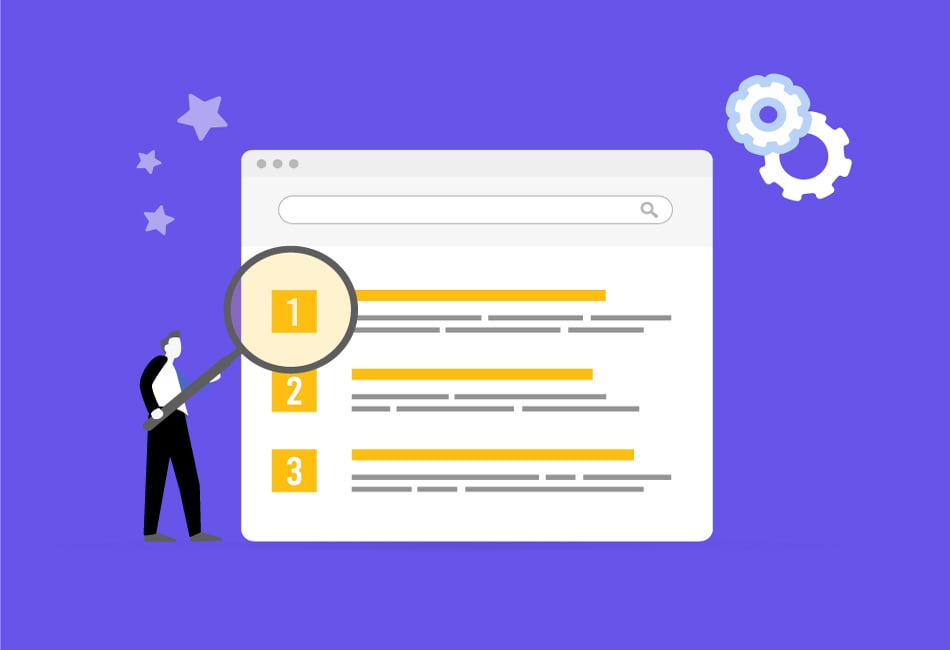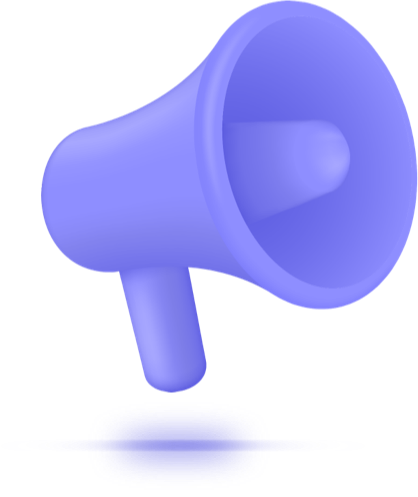What is on-page SEO?
On-page SEO is all about making your website’s pages shine in the eyes of search engines like Google. It’s the work you do on your website to make sure it’s full of content that’s easy to read, not just by people but by search engines, too. This includes the words you write, your chosen titles, and even the behind-the-scenes code, like meta descriptions. Unlike off-page SEO, which is all about building a reputation through links from other sites, on-page SEO focuses on what’s under your control: your website’s content and structure.
Why is on-page SEO so important? It’s the bedrock of your site’s visibility online. When you nail it, search engines understand what your site is about, making sure it’s shown to people searching for what you offer. More than just rankings, good on-page SEO makes your site more enjoyable for visitors, increasing the chances of converting.
The foundation of On-page SEO
The journey to mastering on-page SEO begins with a strong foundation, which hinges on two crucial elements: technical SEO and user experience (UX). Both aspects work in tandem to not only please search engines but also provide visitors value and ease of use. This section dives into the essential components that form the bedrock of effective on-page SEO.
Technical SEO: Ensuring a solid technical groundwork
Technical SEO is the core foundation of your website, making sure it’s constructed so that search engines can easily understand and index. This involves several key areas:
In a world where patience is thin, and attention spans are shorter, website speed can make or break your site’s success. A fast-loading site improves user experience and positively impacts search rankings. Optimizing images, leveraging browser caching, and minimizing code can significantly reduce load times. If your website is using WordPress then WP Rocket is an effective tool to help increase page load times.
With the surge in mobile browsing, having a website that adjusts smoothly across various devices is no longer optional. Responsive design ensures your website is attractive and functions smoothly on desktops, tablets, and smartphones. This matters because search engines favor sites that are mobile-friendly and easy to navigate.
SSL encryption has become a standard for website security, protecting the data exchange between users and the site. Not only does it safeguard sensitive information, but it also signals to users and search engines that your site is trustworthy. Google has confirmed that SSL is a ranking factor, emphasizing the importance of security in today’s digital landscape.
User experience (UX): The role of UX in on-page SEO
While technical SEO sets the stage, UX brings your website to life, focusing on how visitors interact with and experience your site. It’s about making your website not just accessible but enjoyable to use.
A well-organized site helps users find what they need quickly and easily. A logical, hierarchical structure with clear categories and a simple navigation menu facilitates better indexing by search engines and enhances user satisfaction. Think of your website as a library—without a sensible layout and signage, finding a specific book becomes frustrating.
How content is presented on your site plays a significant role in keeping visitors engaged. Large blocks of text can be daunting; breaking content into manageable chunks with headings, bullet points, and images can make it more digestible. Additionally, ensuring that your content is readable on all devices, with fonts and colors that are easy on the eyes, will keep users coming back.
Master keyword research
Embarking on keyword research is like setting out on a treasure hunt. The keywords are the treasure map, and the treasure is the stream of visitors to your website. This guide aims to help you become an expert in keyword research.
The art and science of keyword research
Keyword research is a blend of creativity and analytics. It’s about understanding which words people type into search engines and the why behind them. The ‘art’ comes from putting yourself in the searcher’s shoes, thinking about the many ways someone might look for information related to your content. The ‘science’ involves analyzing data to decide which keywords are worth targeting.
Tools and techniques for effective keyword discovery
A tool shed full of instruments is designed to help you uncover the best keywords for your content. Some of the most indispensable include:
- Google Keyword Planner: This tool is excellent for directly getting search volume and competition levels from the search engine giant.
- SEMrush: Offers detailed keyword data competition analysis and helps discover keyword variations.
- Ahrefs: Known for its extensive backlink analysis, Ahrefs also provides powerful keyword research features.
Techniques for effective keyword discovery involve:
- Looking at competitor keywords.
- Analyzing top-performing content in your niche.
- Using keyword research tools to explore variations and related search queries.
Understanding searcher intent and keyword relevance
The key to successful keyword research is grasping searcher intent. It’s the ‘why’ behind the search. People could be looking to buy, learn, solve a problem, or browse. Each intent requires different types of content. Keywords must be chosen not only for their popularity but also for their relevance to the purpose behind the search query.
Long-tail vs. short-tail keywords
Short-tail keywords are broad, often just one or two words, and incredibly competitive. They have high search volumes and competition, making it hard to rank for them. Long-tail keywords, however, consist of longer, more detailed phrases. They may have lower search volumes but lower competition and higher conversion rates because they align more closely with searcher intent.
When to use which? Use short-tail keywords to cast a wide net and establish the general theme of your content. Lean on long-tail keywords when you’re aiming to capture a very targeted audience ready to engage or purchase.
Understanding the importance of topic clusters
Topic clusters are a crucial component of modern search engine optimization. Rather than focusing on individual keywords, topic clusters take a comprehensive approach to content optimization. The idea behind topic clusters is to group related content into clusters centered on a central topic. This approach helps search engines better comprehend the depth and breadth of your content, leading to a better experience for the user and higher rankings on search engines.
By structuring your website’s content around topic clusters, you could establish your website as an authoritative source on a particular subject, increasing visibility, traffic, and conversions. Moreover, topic clusters can help you stay ahead in the constantly changing world of of search engine optimization.
Optimizing content for search engines and users
Creating high-quality content is crucial in today’s digital age. However, more than simply creating content is required. To maximize the potential of your content, it should be tailored for both search engines and users. Here are some essential tips to help you optimize your content:
Your title is the first thing that users and search engines see. It should be eye-catching and informative, and it should include relevant keywords. A well-crafted title can boost click-through rates and enhance search engine rankings.
Meta descriptions provide a quick summary of your content and show up on search engine results pages, playing a big role in how often people click on your site. Crafting an engaging meta description can attract users to click on your content, boosting engagement.
Header tags (H1, H2, H3, etc.) help organize your content and make navigating easier for users and search engines. They also help establish the hierarchy of your content, with the H1 tag being the most important.
Using header tags correctly can boost your site’s ranking on search engines and make it better for users.
Good and interesting content is important for search engines and people. Search engines look for content that matters, teaches something, and keeps readers interested. People like to read content that is easy to understand, looks nice, and is useful.
Using images, infographics, and videos can enhance and make your content more engaging. They break up the text and provide additional context and information. Additionally, search engines can crawl, and index multimedia content and it can enhance your search engine rankings.
Internal linking involves placing links on your website that connect to other internal pages on the same site. It helps people find their way around your site and discover more related stuff. Also, internal linking can make your site rank higher on search engines and get users more involved.
Advanced on-page optimization techniques
On-page optimization is a very important aspect of search engine optimization (SEO). It involves optimizing individual web pages to increase rankings and attract more relevant traffic in search engines. Here are some advanced on-page optimization techniques:
Schema markup is a special code on your website that helps search engines understand your website’s content better. Adding schema markup can improve your site’s search rankings and make it nicer for users.
Featured snippets and other SERP features, such as knowledge panels and local packs, are becoming increasingly important in SEO. Adapting your content to these elements can raise your website’s ranking in search results (SERPs) and increase its visibility to users.
Comments, likes and shares on social media can have an indirect effect on your website’s search engine positions. Sharing your content on social media may increase its visibility, bring more visitors, and create more backlinks, all of which can boost your site’s search rankings.
Local SEO means making your website more friendly to local searches. It involves using local keywords, making content that’s relevant locally, and improving your Google My Business listing. Doing this boosts your presence in local search results, helping you draw in more customers from your area.
Measuring and analyzing on-page SEO performance
Measuring and analyzing on-page SEO performance is crucial for improving your website’s search engine rankings, driving more traffic, and increasing conversions. Here are some critical strategies for measuring and analyzing on-page SEO performance:
Key performance indicators (KPIs) for on-page SEO
Key performance indicators (KPIs) are metrics that help you track the success of your on-page SEO efforts. Some key KPIs include organic traffic, bounce rate, time on page, click-through rate (CTR), and conversion rate. By monitoring these KPIs, you can identify areas for improvement and optimize your content accordingly.
Tools and platforms for tracking on-page SEO success
Several tools and platforms are available to help you track and analyze your on-page SEO performance. Google Analytics is a no-cost tool that offers insights into your website’s traffic and user behavior. Tools like Ahrefs and SEMrush provide detailed data on your website’s search engine rankings, backlinks, and keyword performance.
Conducting an on-page SEO audit
Conducting an on-page SEO audit is essential to measuring and analyzing your on-page SEO performance. An audit helps identify areas for improvement and provides insights into your website’s content, structure, and optimization. Here is a step-by-step guide for conducting an on-page SEO audit:
- Determine your key keywords and make sure they are included in your content.
- Review your website's header tags and meta descriptions to make sure they're fine-tuned for both search engines and visitors.
- Review your website's internal linking structure to ensure it is optimized for user experience and search engine bots.
- Check your website's load time and mobile-friendliness to ensure it provides a smooth user experience.
- Review your website's content to ensure it is high-quality, relevant, and engaging.
- Identify and fix any technical issues, such as broken links or duplicate content.
Need professional on-page SEO help?
Mastering on-page drug rehab SEO is key for any successful website, and it’s vital for getting noticed online and providing a great visitor experience. At Huely Inc., we’re here to guide you through every step of improving your site. Our experts are ready to tailor on-page SEO strategies for you, ensuring your site stands out and performs its best.
Looking for professional SEO help? Reach out to us at Huely Inc. Let’s grow your website together, making it search-engine friendly and a favorite among visitors. Get in touch now to see how our services can benefit your website.





